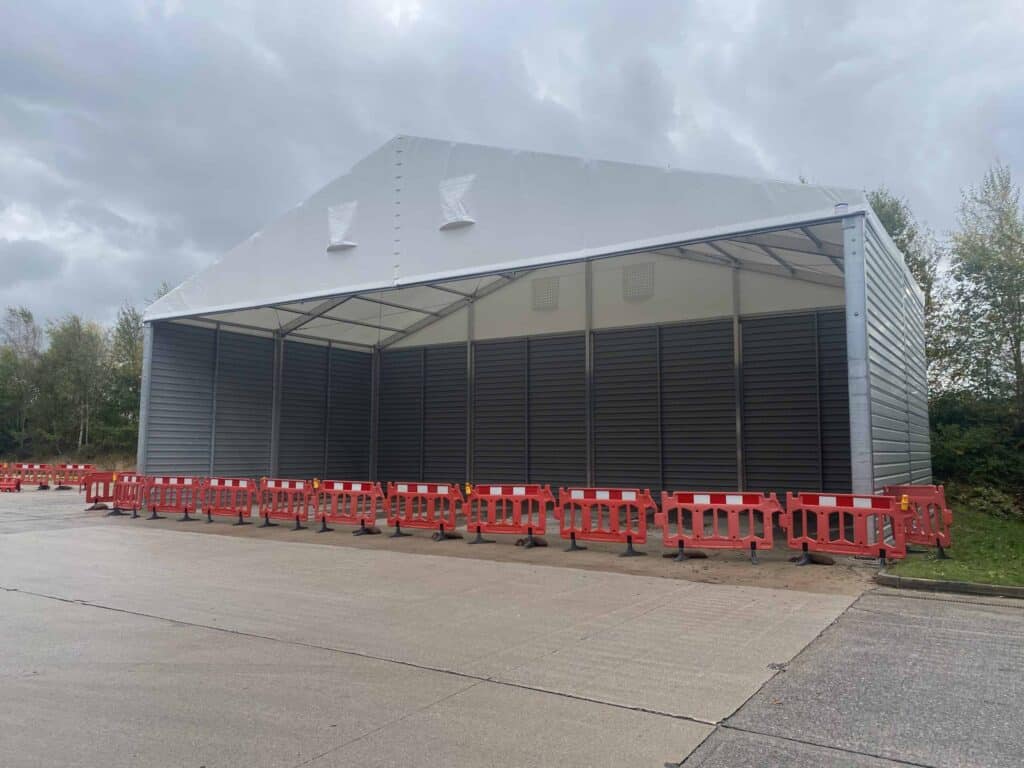The Versatility of Temporary Buildings Across Industries: A Comprehensive Exploration
In the dynamic landscape of today’s industries, the demand for flexible and adaptable solutions has led to the increasing popularity of temporary buildings. These structures, also known as portable or modular buildings, offer a range of benefits that make them an ideal choice for various sectors. From construction sites to retail spaces, agriculture to healthcare, the versatility of temporary buildings shines through, providing quick, cost-effective, and adaptable solutions. This article delves into specific industries and explores why customised temporary buildings have become the go-to option for addressing diverse needs.
1. Construction Industry: Building the Future with Flexibility
In the fast-paced world of construction, time is money, and the ability to set up functional spaces quickly can significantly impact project timelines and costs. Temporary buildings offer a nimble solution for the construction industry, serving as on-site offices, storage facilities, and workshops during projects.
Traditional brick-and-mortar structures often entail lengthy planning, permitting, and construction processes, causing delays in project commencement. In contrast, temporary buildings can be swiftly erected (one of their key features), providing immediate workspace for project managers, engineers, and administrative staff. This adaptability is especially crucial in construction, where project requirements can change rapidly.
Consider a large-scale urban development project that requires a construction office on-site. Instead of waiting for months for a traditional office building to be constructed, a temporary building can be installed within weeks. These structures are not only quick to set up but can also be easily expanded, reduced, relocated as project needs evolve, and are a budget-friendly temporary storage solution for any business. The flexibility offered by temporary buildings is a game-changer in the construction industry, allowing teams to stay agile and responsive to the demands of the project at hand.
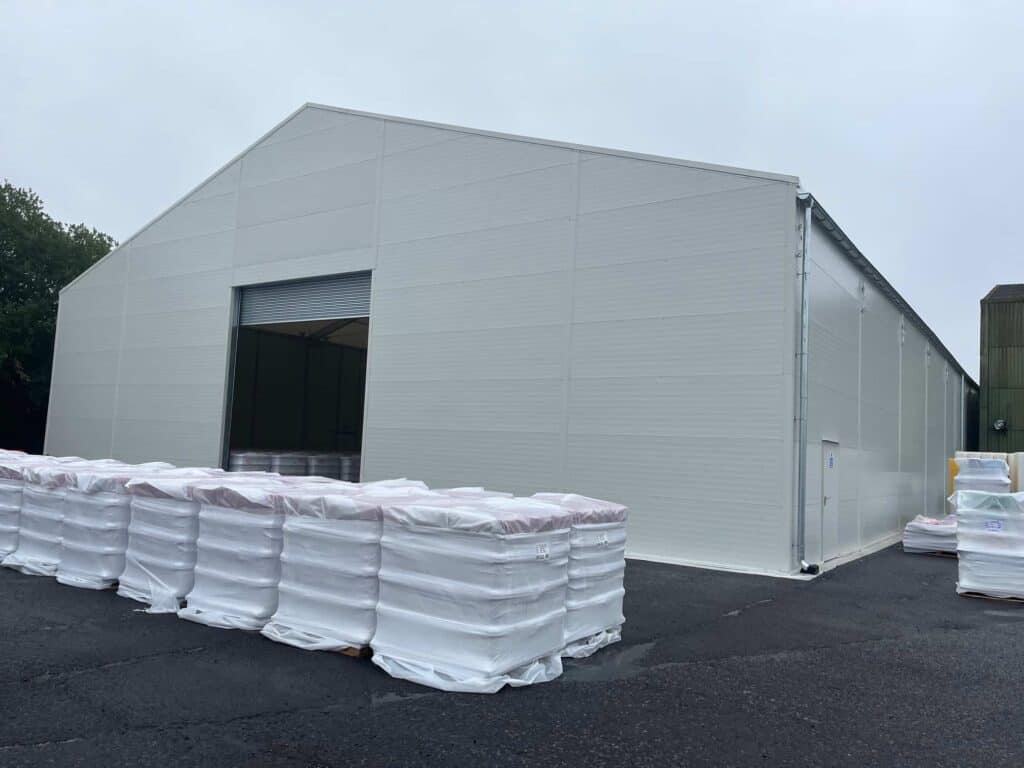
2. Manufacturing: Enhancing Operational Agility
Manufacturing facilities often experience fluctuations in production demands, especially during peak seasons or when expanding operations. Traditional buildings may not provide the agility required to respond to these dynamic needs, making temporary buildings an ideal solution for the manufacturing sector.
Temporary structures can serve as additional production facilities, warehouses, or storage spaces, allowing manufacturers to scale their operations without the long lead times associated with constructing permanent buildings. For example, a manufacturing plant facing a sudden increase in production orders can quickly deploy temporary buildings to house new production lines, ensuring that they can meet demand without compromising on quality.
The cost-effectiveness of temporary buildings is a significant advantage for manufacturers looking to optimise their operational expenses. Instead of investing in permanent structures that may become redundant after a specific project or season, manufacturers can hire or purchase temporary buildings tailored to their immediate requirements. The modular nature of these structures allows for easy customisation, ensuring that they can be configured to accommodate specific production processes or storage needs.
3. Warehousing and Logistics: Streamlining Storage Solutions
The warehousing and logistics industry, with its constant ebb and flow of goods, demands flexible storage solutions. Traditional warehouses, while essential, may not always offer the adaptability required to respond to seasonal peaks or sudden increases in inventory. This is where temporary buildings step in, providing a scalable and cost-effective alternative.
Temporary structures can be quickly deployed to create additional warehouse space, serving as overflow storage during busy periods or as distribution centres for specific projects. For instance, a retail business preparing for a major sales event can utilise temporary buildings to stockpile inventory without committing to a permanent expansion. It’s even possible to utilise pre-owned temporary buildings for further cost savings.
The speed of installation is a critical advantage for the warehousing and logistics sector. In a scenario where a company needs to establish a temporary distribution centre in response to a sudden spike in online orders, a temporary building can be erected in a matter of weeks, allowing operations to ramp up swiftly. This flexibility ensures that businesses can optimise their storage capacity without the long timelines associated with traditional construction.
Moreover, the modular design of temporary buildings allows for easy customisation, such as temporary storage with high eaves, to suit specific storage requirements. Whether it’s creating temperature-controlled storage for perishable goods or configuring the space for efficient inventory management, temporary buildings provide a tailored solution that aligns with the ever-evolving needs of the warehousing and logistics industry.

4. Retail: Transformative Spaces for Every Season
In the retail sector, where consumer trends and preferences can change in the blink of an eye, flexibility is paramount. Temporary buildings offer retailers a versatile solution for various needs, from seasonal sales events to accommodating excess inventory or hosting pop-up shops.
Imagine a fashion retailer preparing for a high-profile product launch or an annual clearance sale. Instead of investing in a permanent expansion that might be underutilised after the event, the retailer can opt for temporary buildings. These structures can be swiftly erected to create additional retail space, providing a temporary storefront that aligns with the specific demands of the moment.
The cost-effectiveness of temporary buildings is a key advantage for retailers looking to optimise their budgets. Compared to the time and financial investment required for traditional construction, temporary buildings offer a quicker and more economical solution. Retailers can adapt their physical spaces to match changing consumer behaviours without committing to permanent changes.
Furthermore, the adaptability of temporary buildings allows retailers to explore new markets or test different retail concepts with minimal risk. For example, a brand looking to enter a new geographic location can set up a temporary pop-up store to gauge customer interest before making a long-term commitment.
5. Agriculture: Sheltering Growth on the Farm
In the agricultural sector, where the rhythm of the seasons dictates the pace of work, temporary buildings offer farmers a valuable tool for enhancing operational efficiency. From storing equipment to providing shelter for livestock, these structures play a crucial role in supporting the diverse needs of modern farming.
Consider a scenario where a farmer needs additional storage space for machinery or harvested crops. Instead of constructing a permanent building, which might be unnecessary for most of the year, a temporary structure can be quickly deployed after purchasing or obtaining a rental agreement. Whether it’s a seasonal workshop or a shelter for farm equipment, these structures provide farmers with the flexibility to adapt to the changing demands of each agricultural cycle.
The portability of temporary buildings is another key advantage for the agriculture industry. Farmers can strategically position these structures across their land to optimise workflows and reduce the time and effort required for tasks such as equipment maintenance or livestock management.

6. Oil and Gas: Temporary Buildings in Remote Environments
The oil and gas industry, often operating in remote and challenging environments, requires infrastructure that can be rapidly deployed and easily relocated. Temporary buildings provide a strategic solution for establishing on-site offices, accommodation, and storage facilities in these dynamic settings.
Consider an exploration project in a remote location where traditional construction may be impractical due to logistical challenges and time constraints. Temporary buildings can be quickly transported to the site and assembled to serve as command centres, offices, or living quarters for personnel. This agility ensures that exploration and extraction operations can commence without the delays associated with permanent construction.
The modular design of temporary buildings is particularly advantageous in the oil and gas sector. Components can be easily transported to remote locations, and the structures can be configured to meet specific project needs. For instance, a drilling site may require temporary buildings for equipment storage, laboratories, and administrative offices, all of which can be accommodated through modular structures.
Additionally, as exploration projects progress and operational needs evolve, temporary buildings can be disassembled and relocated to new sites, providing a level of flexibility that traditional construction methods struggle to match. This adaptability is crucial in an industry where exploration activities are subject to change based on geological findings and market conditions.
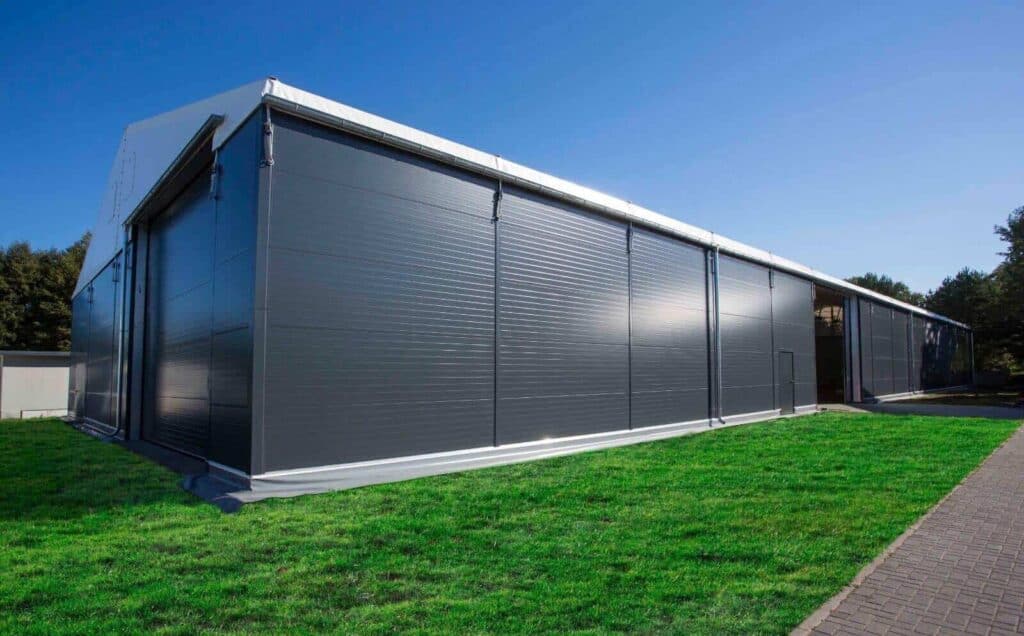
7. Military and Defence: Agility in Strategic Operations
The military and defence sector demands flexibility and adaptability in its infrastructure to support strategic operations and respond to dynamic threats. Temporary buildings play a vital role in meeting these requirements, providing deployable solutions for various purposes, including command centres, storage, and barracks.
In military operations, particularly in field deployments or training exercises, the ability to establish command centres rapidly is essential. Temporary buildings offer a quick and efficient solution, allowing military personnel to set up communication hubs, offices, and strategic planning centres in a matter of days. This agility is critical in situations where rapid decision-making and coordination are paramount.
The portability of temporary buildings aligns with the mobile nature of military operations. These structures can be transported to different locations as operational needs change, providing a level of adaptability that traditional buildings cannot match. For example, a military unit engaged in a training exercise may require temporary structures for housing, medical facilities, and equipment storage, all of which can be easily transported and assembled at the exercise site.
8. Healthcare: Adaptable Spaces for Healing
The healthcare sector, with its diverse and dynamic needs, benefits from the versatility of temporary buildings in creating adaptable spaces for patient care, administrative functions, and storage. Whether responding to a sudden increase in patient numbers, undergoing facility renovations, or establishing temporary medical facilities, these structures offer a valuable solution.
During public health emergencies, such as a pandemic, the demand for medical facilities can surge unexpectedly. Temporary buildings can be rapidly deployed to create additional hospital wards, testing centres, or administrative offices. This speed of implementation is crucial in situations where immediate healthcare infrastructure is required to meet the needs of the community.
Temporary buildings also play a vital role during facility renovations or expansions. When a hospital is undergoing construction, existing services may need to be relocated temporarily. In such cases, modular structures can serve as temporary clinics, administrative offices, or storage spaces, ensuring that patient care remains uninterrupted during the construction phase.
The adaptability of temporary buildings extends to specialised healthcare needs. For example, a medical facility may require temporary structures for diagnostic imaging, laboratories, or rehabilitation services. The modular nature of these structures allows for efficient customisation to meet the specific requirements of different healthcare services.
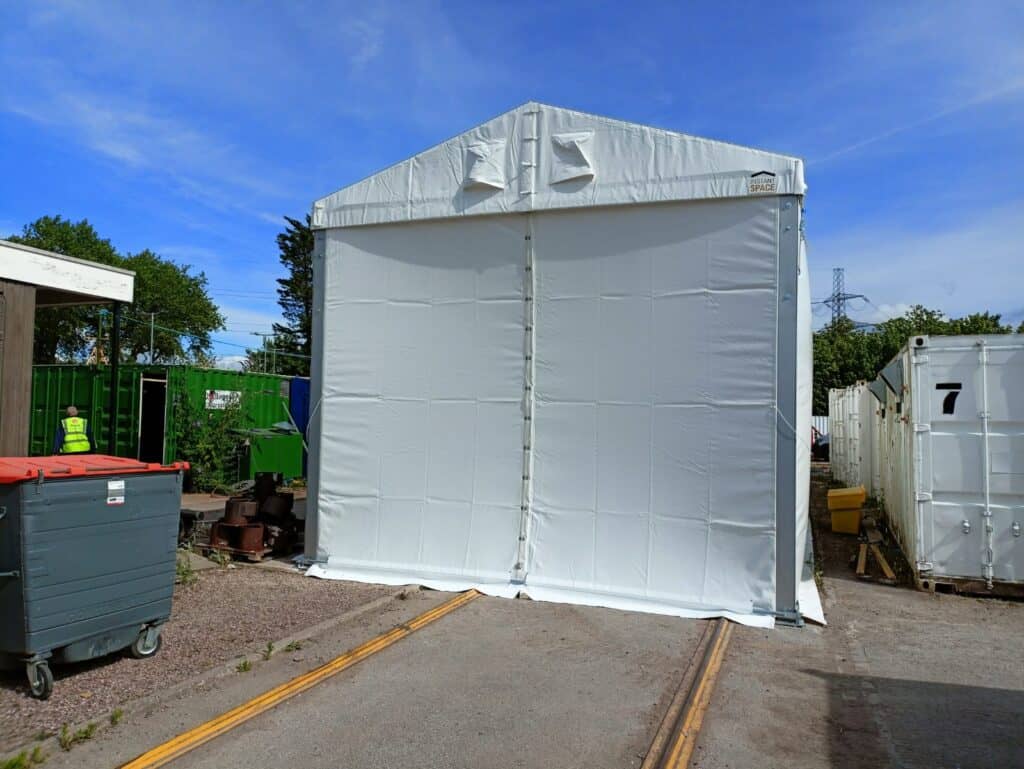
9. Utilities: Powering Efficiency with Deployable Infrastructure
The utilities sector, encompassing power plants, water treatment facilities, and other critical infrastructure, benefits from the versatility of temporary buildings in creating efficient workspaces, storage solutions, and maintenance facilities. These structures offer utility companies the flexibility to adapt to changing operational needs and respond swiftly to maintenance requirements.
In the context of power plants, temporary buildings serve as on-site offices, control rooms, and storage facilities for spare parts and equipment. During planned maintenance or unplanned outages, utility companies can deploy temporary structures to establish operational hubs quickly. This adaptability ensures that essential personnel have the necessary facilities to manage and coordinate activities during maintenance, minimising downtime.
Water treatment facilities, essential for ensuring a safe and reliable water supply, also leverage temporary buildings for various purposes. Laboratories, administrative offices, and storage spaces can be quickly set up to support the ongoing operations of water treatment plants. The modular design allows for efficient use of space and customisation to meet the specific needs of different facilities.
The cost-effectiveness of temporary buildings is particularly relevant in the utilities sector. Instead of investing in permanent structures that may not be fully utilised throughout the year, utility companies can opt for temporary solutions tailored to their immediate requirements. This approach is especially advantageous for projects with a defined lifespan or requiring periodic expansions.
10. Mining: Adaptable Solutions for Resource Extraction
The mining industry, with its dynamic and geographically dispersed operations, benefits from the versatility of temporary buildings in creating adaptable workspaces, equipment storage, and administrative facilities. These structures offer mining companies the flexibility to respond swiftly to changing exploration needs and optimise operational efficiency.
In remote mining sites, the deployment of traditional buildings may be impractical due to logistical challenges and the temporary nature of many mining projects. Temporary buildings provide a nimble solution, allowing mining companies to establish on-site offices, equipment maintenance workshops, and storage spaces quickly. This agility is crucial in an industry where exploration and extraction operations can shift rapidly based on geological findings and market conditions.
The modular design of temporary buildings is particularly advantageous in mining projects with varying spatial requirements. Whether it’s setting up temporary laboratories for mineral analysis or creating administrative offices for project management, these structures can be customised to meet the specific needs of different mining operations.
Moreover, the portability of temporary buildings aligns with the mobile nature of many mining projects. Temporary buildings do not require traditional foundations, allowing rapid deployment. As exploration activities progress, structures can be disassembled and relocated to new sites, providing mining companies with a cost-effective solution for adapting infrastructure to changing project needs.
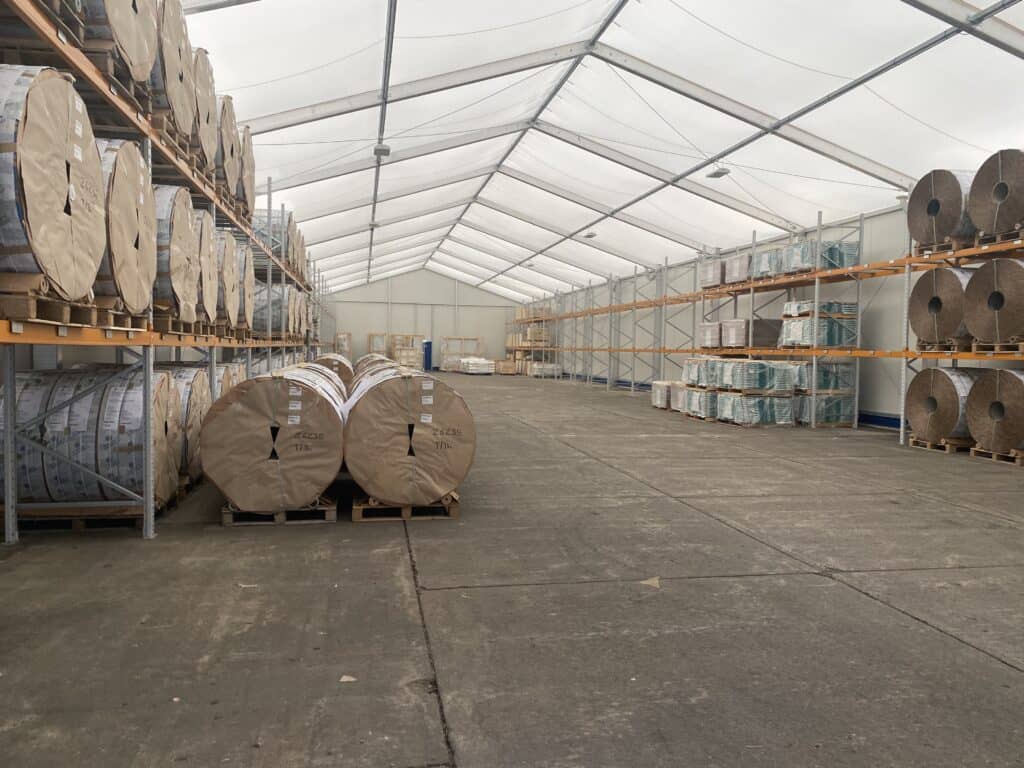
11. Sports and Recreation: Transforming Venues for Major Events
In the world of sports and recreation, where events vary widely in scale and nature, temporary buildings offer a transformative solution for creating adaptable venues, accommodating diverse needs from sporting events to concerts and outdoor activities.
In major sporting events, such as the Olympics or large-scale tournaments, temporary buildings can be deployed to serve as athlete villages, media centres, and ticketing offices, providing the necessary infrastructure for the duration of the event. This adaptability ensures that host cities can meet the unique requirements of each event without the burden of constructing permanent facilities that may be underutilised in non-event periods.
The cost-effectiveness of temporary buildings is particularly relevant in the sports and recreation industry. Rather than investing in permanent structures that may be used infrequently, event organisers can choose temporary solutions that align with the unique requirements of each event, optimising budgets and resources.
12. Environmental Monitoring: Mobile Laboratories for Research
In environmental monitoring and research, where projects often span diverse and remote locations, temporary buildings offer mobile and adaptable solutions for creating on-site laboratories, storage facilities, and administrative spaces. These structures provide researchers with the flexibility to conduct fieldwork in various environments without sacrificing the functionality of a traditional laboratory.
Imagine a research project focused on studying biodiversity in different ecosystems. Traditional laboratories may not be feasible in remote or ecologically sensitive areas. Temporary buildings, however, can be transported to these locations and set up as mobile laboratories equipped with the necessary tools and equipment for on-site analysis. This mobility ensures that researchers can conduct experiments and gather data directly in the field, reducing the need for sample transportation and minimising environmental impact.
The adaptability of temporary buildings is crucial in environmental monitoring projects that involve diverse research requirements. From soil analysis to air quality monitoring, these structures can be customised to house specialised equipment and accommodate the specific needs of different research teams. The modular design allows for efficient use of space, ensuring that temporary laboratories are equipped for various environmental research tasks.
Moreover, the quick setup and removal of temporary buildings align with the often transient nature of environmental monitoring projects. Once a research project is complete, the structures can be disassembled and moved to the next location, providing a sustainable and flexible solution for ongoing environmental research efforts.
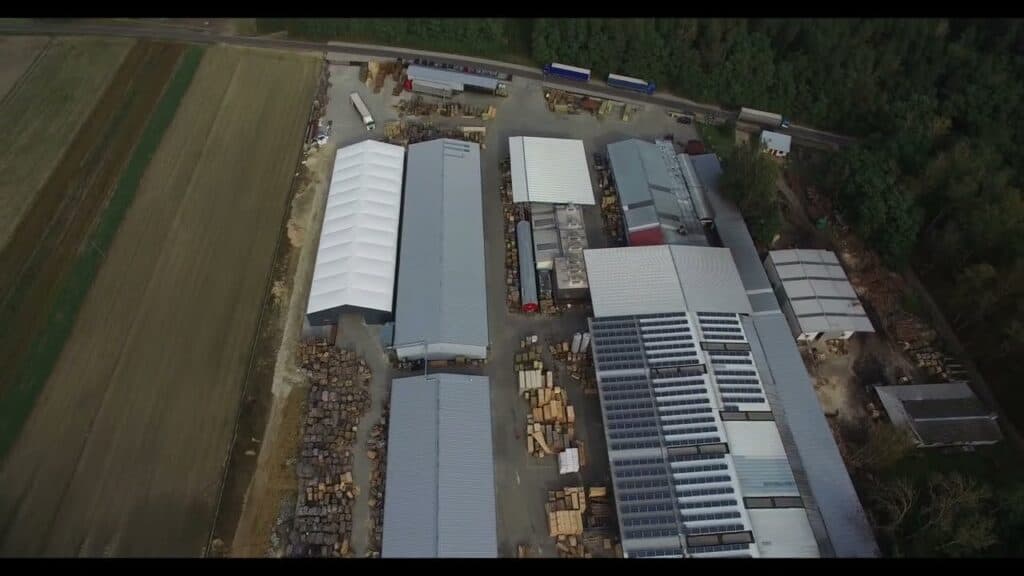
13. Renewable Energy: Building the Future Sustainably
The renewable energy sector, driving the transition to sustainable energy sources, benefits from the versatility of temporary buildings in creating adaptable workspaces, storage facilities, and maintenance centres. These structures offer renewable energy companies the flexibility to respond swiftly to changing project needs and optimise operational efficiency in a rapidly evolving industry.
Consider a large-scale wind or solar energy project in a remote location. Traditional construction may face logistical challenges and time constraints. Temporary buildings provide a swift and efficient solution, allowing renewable energy companies to establish on-site offices, equipment maintenance workshops, and storage spaces quickly. This agility is crucial in an industry where project timelines are often subject to external factors such as weather conditions and permitting requirements.
The modular design of temporary buildings is particularly advantageous in renewable energy projects with varying spatial requirements. Whether setting up temporary laboratories for equipment testing or creating administrative offices for project management, these structures can be customised to meet the specific needs of different renewable energy initiatives.
Moreover, the sustainability aspect of temporary buildings aligns with the goals of the renewable energy sector. Many temporary structures are designed with eco-friendly materials and can be reused or repurposed for multiple projects, minimising the environmental footprint associated with construction activities.
In conclusion, the widespread adoption of temporary buildings across diverse industries underscores their transformative impact on operational efficiency and adaptability. From construction and manufacturing to healthcare and environmental research, these structures offer a flexible and cost-effective solution to the evolving needs of modern enterprises.
As industries continue to grapple with the challenges of a dynamic landscape, the versatility of temporary buildings stands out as a strategic asset, enabling swift responses to changing demands. Moreover, the success of temporary structures in various sectors suggests a potential paradigm shift, extending beyond industry applications. Notably, the concept of temporary buildings is gaining attention as a plausible solution to address the housing crisis in the UK.
While it’s not an area we currently extend our services to, it is an intriguing idea that may become common in the future, as the principles of adaptability, cost-effectiveness, and quick deployment that make temporary structures valuable in industries are now being explored to provide rapid and scalable housing solutions, offering a glimpse into the promising future of these versatile structures in addressing broader societal challenges.

